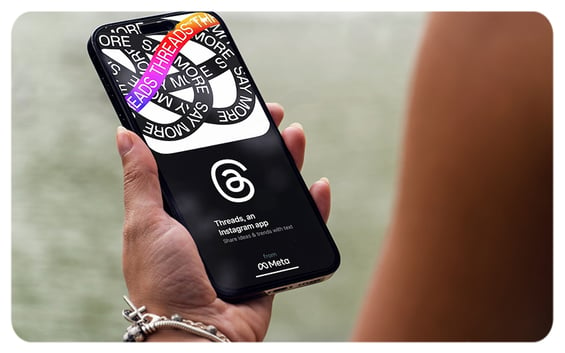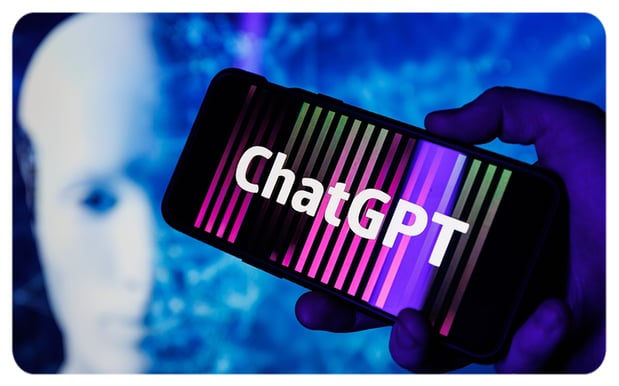5 marketing updates you can’t ignore for a stellar 2024 strategy

Posted by Nicole Thomsen
December 11th, 2023
Gear up for a stellar 2024 with these five unmissable marketing updates. From LinkedIn bidding farewell to key multimedia features and Meta introducing Threads in the EU to Google’s generative AI capabilities, this past month has seen a flurry of change that’s likely to influence content marketing strategies in the year ahead. Let’s explore these updates, ensuring your strategy not only stays current but also ahead of the trends.
#1 Meta’s Threads arriving in the EU

Meta is finally ready to debut its social media platform Threads in the EU. Initially rolled out globally in July, the platform faced a delay in Ireland due to the EU’s strict privacy regulations. Now, Meta has modified the platform to align with these regulations, allowing users to engage with the app without creating a profile.
With a global user base close to 200 million and an additional 40 million EU users anticipated to join, marketers should consider how Threads can fit into their 2024 content strategies. Although the platform is currently ad-free, it’s expected to transition to an ad-based revenue model in time, opening a new realm of advertising possibilities.
#2 LinkedIn’s feature farewell

Big changes are coming to LinkedIn on 14th December 2023. The platform is removing carousel posts, profile videos, and in-image linking. What does this mean for you? If you’ve been using carousels, they’ll be gone, and clickable links in images and videos won’t work anymore. This could be a game-changer, especially if you’ve relied on these features to grab your audience’s attention.
Now, it’s all about getting creative in new ways. You’ll need to shift to using external links in your post descriptions and think outside the box to keep your audience engaged. While LinkedIn is streamlining to match user preferences, it’s also a bit of a curveball for marketers used to the old ways. Time to rethink and re-energise your LinkedIn strategy.
#3 Meta’s ad-free subscription package major drawback

Meta’s rolling out a new ad-free subscription for €9.99 a month, which does more than just remove ads. It also limits how subscribers can use ads and boost posts on their Instagram and Facebook accounts. Why? Because using these features would mean tapping into personal data, which goes against the whole idea of the ad-free option.
This move is a response to EU data privacy rules, letting users dodge personalised ads by paying up. But it’s not all-or-nothing. Subscribers can still run ads on Facebook Pages they manage, as long as these aren’t linked to an Instagram account with the ad-free plan.
This is a significant shift that marketers need to account for in their strategies, particularly in how they target and engage with audiences on Meta platforms. Meta seems to think that most people won’t go for the ad-free option, keeping their main ad business buzzing. For those who do opt in, they’ll have fewer ad powers, which might be a way to nudge fewer people to take up the offer. So, while it could be great for privacy, marketers might find these new limits a bit of a hurdle.
#4 OpenAI pauses new ChatGPT Plus signups

OpenAI has temporarily halted users subscribing or upgrading to ChatGPT Plus after a surge in demand for new features created outages. The overwhelming demand highlights the increasing role of AI in marketing. When used effectively, AI tools offer marketers the ability to streamline processes, optimise campaigns, and gain valuable insights.
But this pause also serves as a reminder for marketers to diversify their toolkit. Relying solely on AI could leave strategies vulnerable to disruptions, as seen in recent weeks, and stale ideas. Let’s not forget that human touch is still key for creating engaging content and effective strategies, something that AI cannot fully capture.
#5 Google’s new generative AI capabilities

Google is gearing up for the holiday season by rolling out new AI features designed to amplify the online shopping experience. These include curated subcategories for customised gift suggestions, AI-generated images for fashion items enabling shoppers to visualise and directly buy styles, and an enhanced virtual try-on tool that now includes men’s tops, offering a more realistic view of clothes on various models. These updates aim to make finding and buying products online more intuitive and personalised.
Julie Black from Google highlights that these updates are all about getting creative and specific with your gift searches. They’re making it easier to find and learn about products, and yes, ads will still be there, but in their own spaces.
For brands, this means new ways to get products seen and bought. Keeping up with these Google updates is key to making the most of your ad spend.
Sign up for our newsletter now to stay in the loop. Get the latest insights and trends delivered straight to your inbox - it's the easiest way to stay connected with us! Simply subscribe using the link below.

Nicole Thomsen

Previous Post
Brands vs consumerism: Black Friday campaigns that changed the retail game
Next Post

Digital transformation strategies that work – stories from 13 DX leaders
Subscribe Here
You may also like...
Nicole Thomsen | Dec 11, 2023
Nadia Reckmann | Nov 23, 2023
Nicole Thomsen | Nov 6, 2023






